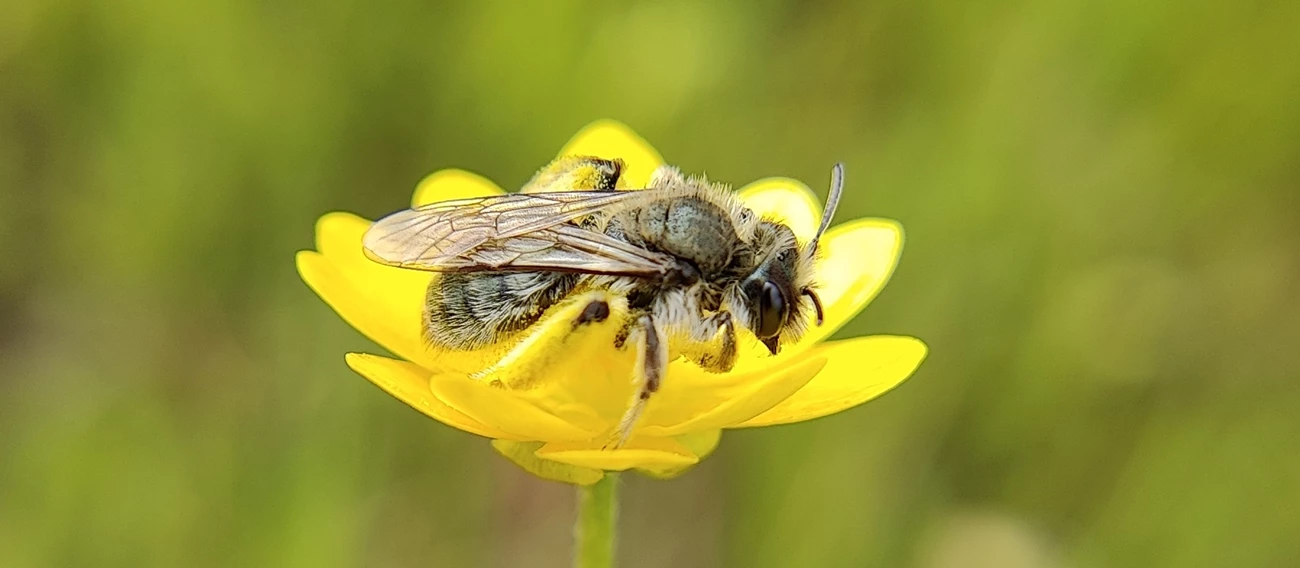Last updated: June 14, 2024
Article
What’s the Buzz about Bee Research in Marin?
By Sara Leon Guerrero, Community Science Program Manager, Golden Gate National Parks Conservancy

Sara Leon Guerrero / Parks Conservancy
June 2024 - Have you heard the buzz? One Tam’s Tamalpais Bee Lab is in the midst of an exciting new phase, transitioning from inventory to targeted monitoring. The bee lab is a One Tam community science effort understand more about Mount Tamalpais' local wild bees. It began when our Peak Health process—to determine the mountain’s overall health—identified pollinators as an important gap.
Before the bee lab, we didn’t know much about the status of bees in Marin County. From 2017-2022, in collaboration with Dr. Gretchen LeBuhn and her lab at San Francisco State University, we completed initial surveys. That inventory, to find out which species were out there, yielded remarkable results: 32 genera and 279 species of bees. Our volunteers were critical to this first phase, helping us manage collections of bees to send off to the US Department of Agriculture for identification. You can see the most up to date results in our Peak Health report.
Now, after a lot of planning, we are excited to share what our new phase entails, including new volunteer opportunities. We're focusing on learning more about specific bee communities and gathering information to inform future land management studies. At the same time, we’ll be contributing local data to broader efforts to study and protect native bees. To do this, we’re taking part three projects:
-
California Bumble Bee Atlas: This collaborative community science effort is coordinated by the Xerces Society of Invertebrate Conservation and California Department of Fish and Wildlife. It aims to track and conserve California’s native bumble bees and contribute to the global understanding of bumble bee distributions.
-
Ground-nesting Bee Surveys: GNBee is a recent community science project launched by the Danforth Lab at Cornell University to understand and protect ground-nesting bees. Approximately 75% of all native bee species nest in the ground and yet we still know relatively little about their nesting habitat preferences. By participating, community scientists can help fill critical knowledge gaps on where and when bees nest. With that data, researchers and land managers can work to better protect them in our public lands.
-
The San Francisco Bay Area Leafcutter Bee Search Party: This new effort aims to find Trachusa gummifera, a rare endemic bee. It is only known from a few historical records, has been missing for decades, and was last seen in the Mt. Tam region in 1977. Despite being identified as a species of special concern by the CA Department of Fish and Wildlife, we know little about this species' biology and ecology. The rarity and lack of knowledge make it difficult to assess T. gummifera’s conservation status and needs. Dedicated surveys to document its continued existence and identify habitat associations will help fill these knowledge gaps and provide data for future research and management.
For more information
- Visit the Tamalpais Bee Lab website
- If you’re interested in coming out with the Tamalpais Bee Lab, you can see a list of dates on our calendar
- Email direct questions to communityscience@onetam.org.
See more from the Bay Area Nature & Science Blog
